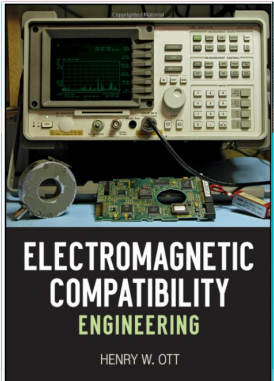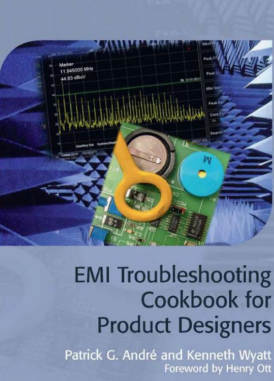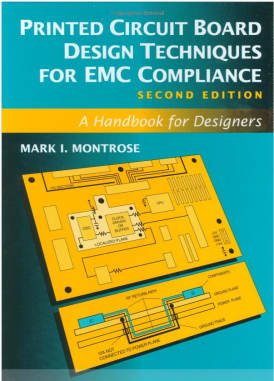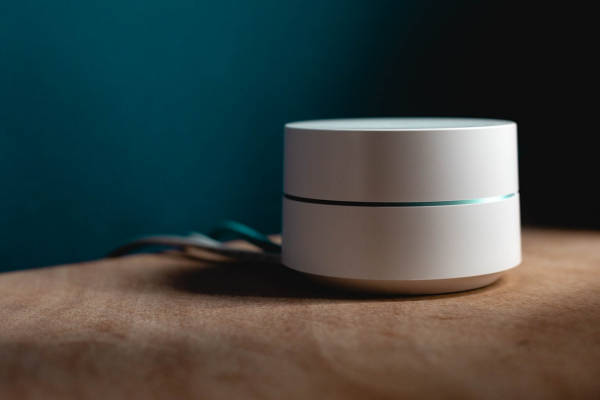Best Books for EMC Design & Testing

Our background as a company is actually as wireless designers who happened to dabble in EMC as a pre-requisite for our own designs. We certainly didn’t start out knowing a tremendous amount about EMC other then it being a hurdle we needed to pass to sell our products.
We work with a number of clients on EMC remediation and over the last few years we’d like to think we’ve seen a fair number of EMC problems and issues.
One common question we get from client’s having design issues is what books do we recommend as best-in-class for learning good PCB layout and grounding as it relates to EMC compliance.
What sort of factors do we think a good EMC testing book should have?
- A good EMC text book focuses on teaching you about the theory of EMC in a non-mathematical way. Far too often you’ll find EMC books that could serve more as mathematical textbooks for a PH.D. candidate. While we appreciate all of the underlying mathematics, in our experience once you understand the theory of what could be causing EMC issues in your design you really won’t dive much deeper into the mathematics.
- Most EMC issues arrive from several root causes. While theory is important, often times the scenario based troubleshooting approach can be more helpful for those who really just need to get their design turned around and passed.
- You really do need to understand how your PCB layout affects EMI in your end product. All of our favorite EMC books have a heavy focus on PCB layout. In our experience 80% of EMI problems usually have to do with poor PCB layout that does not consider current return paths or good grounding techniques.
- Don’t forget that EMC testing is only about electrical theory; part of the EMC testing process is not only understanding the theory behind EMI and the best design techniques. A product designer needs to understand the theory, but also should be well read in what standards are required and the theory behind why certain standards require certain testing. This serves a product designer in the pre-design phase in an immense way. Often times we have working product designs but there was very little consideration put into what test standards this product would need to tested against for EMC purposes. By understanding the underlying testing standards you can find that you may have been able to greatly simplify your bill-of-materials from over design or that you may have under-designed for EMC testing and should have added adequate protection earlier in the designs and now you will need to re-spin your PCB for another version.
So without further ado, here are the EMC design books that we use ourselves on a regular basis and we think are just top shelf.
#1: Electromagnetic Compatibility Engineering, by Henry Ott

By many EMC professional this is considered the absolute authority on the best-practice EMC design. Much like the Art of Electronics is to Electrical Engineering Design, Electromagnetic Compatibility Engineering is the equivalent for EMC design.
Clocking in at nearly 900 pages, Henry Ott’s work covers all of the most critical elements of good EMC design and includes practical (read: non-mathematical) techniques to reduce EMI noise. His work can be used in a practical context in the design and EMC reduction in digital designs, analog circuits, wireless radios, home entertain and stereo equipment, and military devices.
The book covers core EMC elements such as optimal PCB layouts for mixed signal boards, good grounding technical, how to implement cabling inside your product, and any other conceivable EMI design issue you could face.
If there was one book we had to have on our shelf it would be Electromagnetic Compatibility Engineering.
#2: EMI Troubleshooting Cookbook for Product Designers, by Patrick G. Andrew and Kenneth Wyatt

We may be a little biased, since we are good friends with Kenneth Wyatt who is one of the primary authors of this book.
Where Henry Ott’s book is a bit of a monolithic textbook that covers everything, we’ve found for clients who are just starting out in EMC design that this book is much more approachable.
We’ve found Ott’s work to be fairly technical, and certainly written for other Electrical Engineers who have a strong foundation in the electrical phenomena and theory that compromise EMC testing.
Wyatt’s approach to EMC troubleshooting is a bit more scenario based (and to be honest, most EMC issues fall under the scenarios he outlines). The book provides simple “recipes” that can be followed to determine why your product is not meeting EMC limits.
One item we particularly like is the detailed analysis and demonstration of practical techniques and tools used in for tracking sources of EMC noise and the explanations as to how these sources of noises are coupled into the design of systems. The way these mechanisms are described are less formalistic then Ott’s work (yes, sometimes simpler is better!)
We are always on the lookout for new work from Kenneth, and would highly recommend this book and any other subsequent works of his.
#3: EMC for Product Designers, by Tim Williams

EMC for Product Designers is another great EMC reference, but we think it’s best value is not so much as a design guide in terms of learning about EMC and EMI theory and noise sources.
Where this book shines is in providing all the required information on the requisite EMC standards that you’ll face as a product designer. The book features an in-depth examination of the both the FCC Certification test standards but also the EU EMC and EU CE RED standards (Ie. the EMC and Radio Directives). In addition the book covers CISPR 32/35 for EU EMC testing, MIL STD 461 for your military projects, and even covers DO-160 for aerospace standards.
This is a great reference sources for designers who understand EMC, but may not be aware of what the actual testing standards that are required for their product. We would recommend either Ott’s or Wyatt’s work if you are just starting out learning about EMC, but as you work your way towards formal EMC testing William’s has a great book here to help you understand what EMC testing you will need and the theory behind that actual testing.
#4: Printed Circuit Board Design Techniques for EMC Compliance: A Handbook for Designers, by Mark Montrose

Mark Montrose starts with a simple concept that Electromagnet compatibility as an engineering practice often seems like black magic. His approach to EMC is that this belief is only around because engineers do not fundamentally understand at the PCB level how radio frequency energy is created and how it flows and is coupled across your PCB.
His approach does not require an advanced degree in mathematics, similar to the EMI Troubleshooting Cookbook. He starts with simple EMC theory and uses a scenario based approach to dissect EMC issues int understandable concepts.
Tis book as a good introduction to experienced product designers who understand how to layout PCBs but would like to have more real understanding in how their layouts can create potential EMC issues.
The book covers a basic introduction to EMC theoretical, and then expands into how to best implements inter-connections, I/O ports, how to protect against electrostatic discharge (ESD), and the best practices in bypassing and decoupling capacitor choices.
We recommend Montrose’s work as a good cross-reference and quick-access guide for both product designers, electrical engineers, and PCB designers who need non-mathematical approach to understanding how to optimally layout their PCBs. You do not need to be a formally trained EMC engineer to benefit from reading this book.
We make compliance testing easy.
Submit your project details today for a no-cost quote
Request Quote

